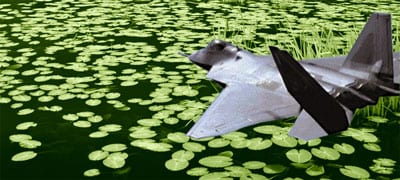By Rick Rozoff
The irresponsible expansion of NATO and its conversion to a naked tool for Western (US-led) imperialism is laying the groundwork for a confrontation between continents as the US increasingly threatens China and Russia. The elimination of this type of malignant leadership is now essential for the survival of humanity and the arrival of a lasting peace. Given the appalling magnitude of their crimes, their pervasive corruption, most top Western leaders now fully deserve to be brought before a Nuremberg-type tribunal. —Eds
With the emergence of China as the world’s second-largest economy and its concomitant renewal of (comparatively minor) territorial claims in the East China Sea and South China Sea, the stage is set for a U.S.-Chinese confrontation of a nature and on a scale not seen since before the Sino-Soviet split of 1960.
Following the expansion of the North Atlantic Treaty Organization throughout Europe over the past thirteen years – every European nation is now a full member of or involved in one or more partnership arrangements with the U.S.-led military bloc except for Cyrus, which is under intensified pressure to join the Partnership for Peace program – which has enforced a cordon sanitaire on Russia’s western and much of its southern frontier, it was inevitable that the U.S. and its allies would next move to encircle, quarantine and ultimately confront China.
In the past decade the Pentagon has begun conducting annual multinational military exercises in nations bordering China (Khaan Quest in Mongolia, Steppe Eagle in Kazakhstan) and near it (Angkor Sentinel in Cambodia), has with its NATO allies waged war and moved into bases in nations bordering China – Afghanistan, Kyrgyzstan, Pakistan and Tajikistan – as well as nearby Uzbekistan, and, even before the official announcement of the strategic shift to the Asia-Pacific region, acquired the use of new military facilities in Afghanistan, Kyrgyzstan, Pakistan, Australia, Singapore and the Philippines.
President Obama’s current visit to Cambodia, Myanmar and Thailand and Defense Secretary Leon Panetta’s simultaneous trip to Australia, Cambodia and Thailand are exemplary of this trend.
Early this year NATO announced the launching of its latest, and first non-geographically specific, partnership program, Partners Across the Globe, which began with the incorporation of eight Asia-Pacific nations: Afghanistan, Australia, Iraq, Japan, Mongolia, New Zealand, Pakistan and South Korea.
Since the summer of 2010 the U.S. has been courting the ten members of the Association of Southeast Asian Nations (Brunei, Cambodia, Indonesia, Laos, Malaysia, Myanmar, the Philippines, Singapore, Thailand and Vietnam), several of whom are embroiled in island disputes with China, for inclusion into a rapidly evolving Asian analogue of NATO which includes the eight above-mentioned new NATO partners and is intended to be a super-Cold War era-like bloc subsuming the former members of the Central Treaty Organization (CENTO), Southeast Asia Treaty Organization (SEATO) and Australia, New Zealand, United States Security Treaty (ANZUS) into a systematic initiative aimed against China.
The so-called Asia-Pacific pivot also entails the deployment of 60 percent of total American naval assets – quantitatively the largest and qualitatively the most technologically advanced and lethal in the world – to the Asia-Pacific region. Even before that U.S. Pacific Command’s area of responsibility has included over 50 percent of the world’s surface, more than 100 million square miles, with U.S. Central Command bordering China and India in the other direction. The U.S. Seventh Fleet, tasked to patrol the waters of the Asia-Pacific, is the largest overseas naval force in the world and will be further enhanced by the U.S. Navy’s intensified deployment to the region. The U.S. has eleven of the world’s twelve nuclear aircraft carriers and all eleven supercarriers.
Washington is also incorporating several Asia-Pacific nations into its global interceptor missile grid, in its initial avatar launched in conjunction with NATO and the so-called European Phased Adaptive Approach which will station increasingly longer-range land-based missiles in Romania and Poland and Aegis class cruisers and destroyers equipped with Standard Missile-3 interceptors in the Mediterranean and likely later in the Baltic, Norwegian, Black and even Barents Seas.
The Pentagon’s partners in the Asia-Pacific wing of the international missile system, which targets China as the European version does Russia, include to date Japan, South Korea, Australia and Taiwan, with the Philippines reported to be the future host of two Forward-Based X-Band Radar-Transportable interceptor sites of the sort deployed to Turkey at the beginning of this year and to Israel in 2008.
China is a critically important component of the two groups representing the greatest potential for a multi-polar world, BRICS (Brazil, Russia, India, China, South Africa) and the Shanghai Cooperation Organization. Russia, its partner in both, confronting the same threats from the West, must, in its own interest as well as those of world peace and equilibrium, support China against American brinkmanship and gunboat diplomacy.
ABOUT THE AUTHOR
Rick Rozoff has been involved in anti-war and anti-interventionist work in various capacities for forty years. He lives in Chicago, Illinois. Is the manager of the Stop NATO international email list at: http://groups.yahoo.com/group/stopnato/
EDITOR’S NOTE: As many readers know, our senior editor and European correspondent Gaither Stewart has just published an espionage novel zeroing in on precisely this topic—US bases ringing the world (lily pads in Pentagonese), as part of America’s effort to project power anywhere and intimidate and encircle Russia, now China, and so on. We highly recommend it to our audience as a terrific example of “true fiction.” The novel is appropriately called LILY PAD ROLL (Punto Press). An ad with links to Amazon appears on the right column. You can also read reviews of the book on the publisher’s site and elsewhere on TGP and the author’s site.



